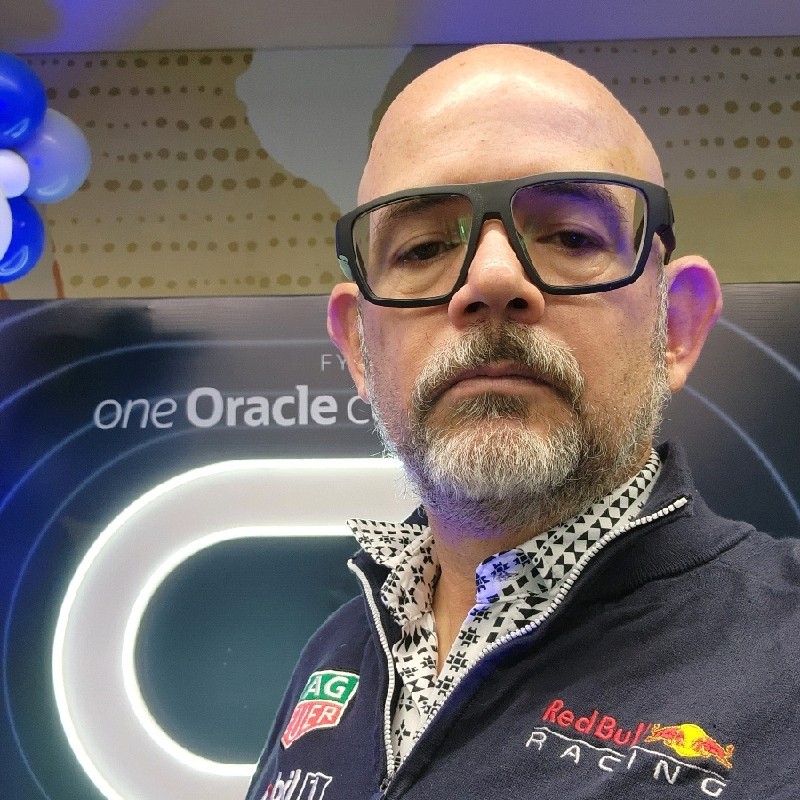FinOps for Data Center: Applying the FinOps Framework
This Paper is Part 2 of a FinOps for Data Center series outlining how applying FinOps Principles—focused on operational expenditure (OpEx), detailed cost attribution, and FinOps Framework Capability-driven practices—enables organizations to align Data Center investment with business value. By providing timely, accurate financial insights, FinOps empowers executive leadership to make more informed executive decisions.
The FinOps for Data Center Series
- Part 1: FinOps for Data Center – Context for Creating a FinOps Practice Profile
- Part 2: FinOps for Data Center – Applying the FinOps Framework (You are here)
- Part 3: FOCUS™ for Data Center – Structuring Data Center Cost and Usage Data
- Part 4: FinOps for Data Center – FinOps Tooling Considerations
Why FinOps for Data Center
The Data Center is evolving from a passive cost center to a key enabler of business performance. FinOps provides a framework that allows organizations to:
- Integrate financial oversight into strategic infrastructure planning.
- Unify financial and operational visibility across multiple platforms.
- Enable better decisions on multi-year planning, investments, risk, and scaling by executive stakeholders.
By adopting FinOps, organizations can shift from fragmented infrastructure reporting to a comprehensive, data-informed model that aligns cost transparency with strategic goals.
About This Paper
This document provides high-level, vendor-agnostic FinOps guidance for Data Centers, outlining the scope of FinOps practitioners’ roles, the application of the FinOps Framework, and relevant theoretical and practical considerations. While FOCUS™ is referenced, detailed data-level information will be addressed separately.
Who Should Read this Paper
This paper applies to FinOps practitioners who have been asked to manage technology spending that extends FinOps concepts beyond the scope of public cloud into Data Centers. Links to relevant material are contained in the Related FinOps Material section of the paper.
Prerequisites
An existing understanding of the FinOps Framework Domains and Capabilities for public cloud, along with being familiar with the content and concepts in Part 1: FinOps for Data Center – Context for Creating a FinOps Practice Profile.
Introduction and Purpose
A FinOps Scope refers to a segment of technology-related spending where FinOps Practitioners apply FinOps concepts. FinOps Scopes extend the Framework’s operating model to encompass intersecting areas of technology spend, particularly as the practice evolves to include activities in addition to public cloud.
According to the State of FinOps 2025 survey, 22% of practitioners are currently engaged in managing Data Center costs, with expectations rising to 36% by 2026—a 14% increase. These trends suggest that FinOps is increasingly being applied to broader areas of technology spending beyond public cloud services.
By collaborating with Core and Allied Personas, FinOps Practitioners may help shift organizational culture away from traditional finance, procurement, and technology silos toward a more integrated, data-driven approach that supports planning, cost analytics, and optimization.
The purpose of this paper is to explore the FinOps Scope for Data Center and to support existing FinOps Practitioners in understanding this area and the application of the FinOps Framework.
Data Center Definition & Characteristics
In the context of FinOps Scopes, “Data Center” is a broad term used to describe non-cloud IT services delivered from facilities either directly owned or managed by the client through contractual or service agreements. The Data Center scope includes all technology-related spending and decision-making activities associated with planning, acquiring, operating, and optimizing the physical and virtual infrastructure that supports an organization’s technology needs.
Read more about how a Data Center is defined for the purposes of this FinOps for Data Center series, the characteristics and special considerations related to private clouds — including approaches for the Data Center scope that could support the enhancement of traditional infrastructure management by applying FinOps principles to fixed-cost assets – in Part 1: FinOps for Data Center – Context for Creating a FinOps Practice Profile (LINK)
Applying the FinOps Framework to Data Centers
This section offers practical considerations for how FinOps Framework Capabilities can be applied within the Data Center Scope. It also provides an indicative view of common Capability starting points for FinOps teams tasked with extending their practice to Data Center environments.
Note: The FinOps Framework poster is included for reference, with highlights indicating where Personas and Capabilities may be applicable when performing FinOps for Data Center. In this scope, the Working Group has determined that all Capabilities could be relevant, depending on organizational context and maturity.
The supporting indicative RACI can help to bring the application of one or many of these to life.
FinOps Framework Maturity & Capability Driven Starting Points
Several Framework Capabilities serve as natural starting points for practitioners.
In conversations at events such as FinOps X and FinOps X Day, a common question raised for FinOps practitioners is:
How well informed are we when it comes to understanding our Data Center cost and usage?
Beginning to answer this question—while complex—can be made more approachable by examining it through three specific Domain Capabilities and mapping it against the stages of the FinOps Maturity Model.
| Maturity | Capabilities |
| Crawl | Data Ingestion
For one or more Data Centers, costs may be spread across multiple bills, cost centers, and stakeholders, with no centralized system to consolidate and present the information coherently. Consider evaluating whether a single Data Center Infrastructure Management (DCIM) tool is in place; if not, this may be a worthwhile starting point. Conduct an audit to confirm that all cost elements are captured—including software licenses and ancillary charges. Allocation Without a complete and unified view of all billing sources, building a comprehensive allocation model can be challenging. However, as visibility improves, an allocation model can evolve alongside it. As new cost elements are identified, begin by classifying each as either application-specific or shared. Introduce tagging or metadata practices to help associate costs with the appropriate business unit or cost center. Reporting and Analytics In many cases, there may be limited or no application- or product-specific reporting on Data Center costs shared among Finance, Leadership, or Product Owners. Depending on the level of available resources, organizations might begin with basic dashboards or move toward automated reporting. Include visibility into application-specific, shared, and unclassified costs, and ensure reporting reaches a manageable, engaged group of stakeholders. |
| Walk | Data Ingestion As Data Center costs are consolidated into a unified system for allocation, opportunities for enhancement can be assessed and prioritized. Key questions to consider include:
Allocation Reporting and Analytics
|
| Run | Data Ingestion At the Run stage, all relevant cost and usage metrics are collected with the frequency and granularity necessary to support accurate allocation, reporting, and analytics. This mature ingestion process enables greater confidence in financial decision-making and operational insight.Allocation As practitioners enter the Run stage, allocation methodologies may evolve from purely informational to more strategic tools that influence behavior. For example, to encourage higher utilization in a Data Center operating at 50% capacity, a temporary discount could be applied within the allocation model to drive adoption. Conversely, when preparing to exit a facility, over- or under-charging consumers may serve as an incentive mechanism aligned with broader business objectives.Reporting and Analytics Integrated dashboarding, reporting, and alerting systems offer a unified and trusted view of cloud and Data Center cost and usage data. These tools support informed decision-making for Finance, Leadership, Product Owners, and other key stakeholders by providing timely, role-relevant insights across the FinOps ecosystem. |
Other Capabilities of Consideration:
Other Capabilities may also serve as entry points to FinOps for Data Center, depending on the initial questions posed to the FinOps practice. Relevant considerations for applying these Capabilities within the Data Center context can be found in the FinOps Capabilities for Data Center section of this paper.
- Budgeting
- Planning and Estimating
- Forecasting
- Anomaly Management
- Workload Optimization
- Architecting for Cloud
FinOps Framework: Capability Considerations for Data Centers
This section outlines practical considerations for applying each FinOps Framework Capability within the context of a Data Center. Practitioners are encouraged to refer to the FinOps Framework for foundational guidance, as that content is not duplicated here.
| Capability | Application to Data Center Considerations |
| Data Ingestion | Data Ingestion for Data Centers requires a fundamentally different approach than for public cloud environments, primarily due to the nature of on-premises infrastructure.
In cloud scenarios, practitioners typically receive standardized billing and usage data covering all interactions with the cloud service provider (CSP) through a single API. In contrast, Data Center reporting must aggregate and normalize information from multiple disparate systems, each with inconsistent formats, granularity, and update frequencies. Potential data sources may include:
The granularity of available data can vary significantly across these systems, making normalization a complex task. While the FOCUS™ standard may serve as a useful reference, it currently requires some level of mapping/ customization to accommodate Data Center–specific metrics. Data silos can further complicate ingestion efforts. Each Facility Operator (FO) may introduce unique variables based on regional regulations, procurement practices, environmental standards, and waste management protocols. These factors must be accounted for when designing ingestion pipelines. Time-series data collection is also more fragmented: some metrics (e.g., power, temperature) may be available in real time, while others (e.g., facility costs, depreciation) may only update monthly. Organizations must establish processes to align these temporally inconsistent datasets. Finally, cost structures in Data Centers often include significant fixed components—such as depreciation and facility leases—that must be amortized appropriately to enable meaningful comparisons with variable cloud costs during analysis and reporting. |
| Allocation | When supporting the development of allocation solutions in a Data Center environment, practitioners should account for key differences from the cloud context—such as distinct cost elements, evolving organizational structures, and varying approaches to cost recovery.
Type and nature of costs to be allocated
Definition of the entity to be “charged” Practitioners may already be familiar with shifting allocation targets as projects begin and end or as products transition from development to production. However, when supporting broader Data Center services, additional factors may come into focus, such as:
Methodology of recovery Within a Data Center, the method for allocating costs back to internal consumers often varies based on the type and nature of the cost or service. Practitioners will likely encounter a combination or variation of the following approaches: Fixed Allocation:
Pure Pass-thru/Consumption:
Subscription:
Definition of Recovery Units This activity involves creating cost units analogous to those practitioners may be familiar with in cloud environments. The actual recovery unit will vary depending on the nature and type of cost—for example:
Examples may include:
Additional Considerations
|
| Reporting and Analytics | A FinOps practitioner may be asked to report on and analyze the data points available from Data Center environments. Being well-informed and able to contribute timely recommendations to reporting and analysis efforts may include, but is not limited to: rightsizing, optimization, total cost of ownership (TCO), alignment with strategic goals, sustainability, capacity planning, and responding to unexpected changes in workload demand.
As with reporting in the public cloud, practitioners require continuous access to Data Center–specific metrics, which are outlined below:
Temporal reporting presents challenges as Data Center costs operate on multiple timescales:
Comparative reporting between Data Center and cloud costs requires the use of normalization techniques to enable meaningful “apples-to-apples” comparisons. These techniques help account for differences in cost structures, depreciation models, and operational approaches. FOCUS™ for Data Center Costs and Usage Mapping may also assist practitioners in reducing complexity in reporting and analytics—particularly where FOCUS™ has already been adopted for Public Cloud. |
| Anomaly Management | The primary input for FinOps anomaly management in Public Cloud environments is the consolidated cost report. Baselines, thresholds, budgets, and forecasts are typically defined against the consolidated Cloud Service Provider (CSP) billing file—by project, account, service, or other relevant dimensions. Breaches of these thresholds often indicate anomalous or unpredicted consumption patterns, triggering remediation processes involving the appropriate allied personas.
In contrast, Data Center environments often lack this abstraction layer for near real-time monitoring of costs. Anomaly management in Data Centers tends to focus on the consumption, utilization, and availability of the individual infrastructure components that make up a system or support an end-to-end business process. Practitioners may be asked to contribute holistically to scenarios that directly impact cost, such as:
Detection methodologies must account for:
Response frameworks require cross-functional coordination:
|
| Planning & Estimating | Planning & Estimating for Data Centers involves significantly more complex calculations than in cloud environments.
In public cloud, practitioners can often define and estimate nearly all components of a cloud-native system using the CSP’s built-in cost and estimation tools. In contrast, estimating solutions and services within a Data Center typically requires input from multiple disciplines and data sources, including:
Further adding to the complexity, some of these functions may be performed by third-party providers, requiring additional coordination and data integration. Cost estimation for physical infrastructure could incorporate:
Estimation of SI and Managed Services requires:
Planning horizons are fundamentally different:
|
| Forecasting | Similar to Planning & Estimating, Forecasting in the Data Center requires input from additional collaborators and the integration of data with different temporal characteristics compared to cloud-native services.
When forecasting for services delivered from a Data Center, practitioners should consider:
Methodological differences include:
Forecasting accuracy expectations differ:
|
| Budgeting | In the context of Data Center budgeting, you would typically:
Budget cycles are typically aligned with:
Budget variance management is complicated by:
Holdback strategies differ significantly:
Budgeting, together with Planning & Estimating and Forecasting can be seen to overlap as parts of traditional Capacity Planning. |
| Benchmarking | Benchmarking for Data Centers requires different frameworks and metrics compared to cloud:
Industry-standard benchmarks include:
Internal benchmarking approaches differ:
External benchmarking sources include:
Normalization techniques must account for:
Scenarios of Value in Benchmarking for Data Center Scope Multi-Site Data Center Efficiency Benchmarking Useful to implement a comprehensive benchmarking initiative focused on Power Usage Effectiveness (PUE) as the primary efficiency metric across all facilities to compare dissimilar Data Centers across continents, with varying ages (2-15 years), sizes (1,000-5,000 racks), and redundancy levels (Tier II-IV). The FinOps team’s benchmarking approach transforms what could have been arbitrary cost-cutting into strategic efficiency investments backed by data-driven business cases. Hybrid Cloud vs. Data Center TCO Benchmarking When CTO & CFO debates whether to expand the existing Data Center or migrate workloads to the public cloud. The board requires a comprehensive TCO comparison to guide this strategic decision. The FinOps team’s benchmarking enables nuanced decision-making beyond simplistic “cloud vs. Data Center” debates, optimizing both cost and performance. TCO Benchmarking should also consider the value of Resilience, and the costs of Disaster Recovery and Data Security. Industry Peer Benchmarking for Regulatory Compliance A regional bank operates two Data Centers supporting critical financial systems. Banking regulators question whether the bank’s IT infrastructure costs are excessive compared to industry peers. The bank must demonstrate cost efficiency while maintaining regulatory compliance for system availability and data sovereignty. The FinOps team can help conduct comprehensive peer benchmarking using industry data while accounting for regulatory constraints unique to financial services. Sustainability Benchmarking for ESG Reporting For those companies that have commits to carbon neutrality for a defined year in the future (2030). The sustainability team needs to benchmark Data Center carbon efficiency against industry leaders and develop improvement roadmaps that balance environmental goals with cost considerations. The FinOps team develops comprehensive sustainability benchmarking that connects environmental metrics with financial implications. |
| Unit Economics | To enable Unit Economics in the Data Center, it is essential to calculate the Total Cost of Ownership (TCO) for each service or product and link it to a relevant business metric–such as per user, per transaction, per VM-hou). Resource efficiency metrics—such as cost per GB stored or cost per virtual CPU— could also provide valuable insights.
Because TCO is rarely available by default in Data Center environments, it must be derived. This involves annualizing capital expenditures (e.g., hardware, facilities) and incorporating all relevant operational expenditures (e.g., power, maintenance, labor) for the specific service. Unused or underutilized resources should also be factored in, as they contribute to higher unit costs for the services or products delivered. A distinct challenge in Data Center unit economics is the treatment of fixed versus variable costs. Many Data Center costs—such as infrastructure and facilities—are fixed regardless of utilization. As a result, unit costs generally decrease as utilization increases, unlike in many cloud environments where costs tend to scale more directly with consumption. Allocating these fixed overheads to usage-based metrics requires thoughtful and consistent methodology. Time-based considerations are also critical. Organizations must account for the time value of infrastructure investments, align depreciation schedules with business value realization, and adjust forecasts to reflect the evolving nature of technology throughout the asset lifecycle. Implementing unit economics in Data Centers can deliver the following benefits: Within a Single Data Center:
Across Multiple Data Centers:
Across Data Center and Public Cloud (Hybrid):
|
| Architecting for Cloud | When determining which hosting platform to deploy to—whether Data Center, private cloud, public cloud, or SaaS—enterprises should establish a workload placement strategy. While cost is an important factor, it is one of several considerations in the decision-making process. The Architecture function typically defines additional criteria to inform a decisioning model. The FinOps practitioner plays a key role by contributing cost analyses for each hosting option under consideration, supporting a more informed and balanced hosting strategy.
Architecting for Cloud in the Data Center context focuses on: Design principles:
Key architectural considerations include:
Infrastructure choices must account for:
Operational architecture requires:
|
| Workload Optimization | Workload Optimization in the Data Center requires a defined optimization strategy that balances cost, quality, performance, and sustainability—principles consistent with those applied in cloud environments. This strategy is primarily led by Engineering, with input from Finance through IT Financial Management (ITFM) practices.
However, two considerations require specific attention, as they differ significantly from cloud-based optimization: Sizing and Utilization: Unlike the perception of “infinite” scalability in cloud environments, Data Centers operate within fixed physical constraints. Facilities, servers, network switches, and SANs must be provisioned to meet both current and anticipated peak capacity and performance demands. Scaling is limited to the infrastructure physically installed on the Data Center floor, making accurate sizing and efficient utilization critical components of any optimization strategy. Power Management Strategies: From a purely cost-driven perspective, the incentive to schedule or shut down workloads in a fully owned and managed Data Center may appear limited, since the infrastructure costs are largely fixed. However, from a cost and sustainability standpoint, there is growing value in adopting power management strategies. Reducing unnecessary workload activity can help lower energy consumption costs and carbon emissions—also a key consideration as environmental impact becomes a higher organizational priority. Example Considerations – Near Real-time Failover during Disaster Recovery For a critical system that cannot be offline for more than a few minutes, capacity must be deployable and accessible at an alternate geographical location within the business-defined RTO/RPO metrics. The metrics and performance requirements during a DR event will dictate the scale of the secondary site installation, which could range from a smaller footprint installed temporarily in a Public Cloud, to the extreme scenario of 100% duplication of all physical capacity (LAN, SAN Security and Compute) installed in a second DC (assuming the same performance, response time and capacity is required at the failover site). In the extreme case, consideration also must also be given as to how this excess capacity can be utilized during BAU (e.g. hosting the dev/test/QA environment for the system, burst capacity for other virtual systems etc), on the understanding that such systems could be turned off at any time to make way for the failover of Production. Considerations for Typical Workload Optimization
Key optimization techniques include:
Measurement methodologies must account for:
Optimization cycles are typically longer than cloud:
Other Potential Areas for Optimization While not necessarily in scope for the Practitioner, an awareness of and participation in the following activities may help surface unforeseen cost impacts on DC infrastructure
|
| Licensing and SaaS | License and SaaS activities within the Data Center generally align with the guidance outlined in the FinOps Framework Capability. However, there are notable differences in scope and complexity that practitioners should account for.
Specifically, Data Center environments often involve managing a wide range of licensing models, including but not limited to:
Additional license allocation considerations:
New challenges with different dimensions to Cloud:
|
| Rate Optimization | Unlike the published rate cards from Cloud Service Providers, Data Center cost optimization focuses on:
Key rate optimization strategies include:
Financial optimization techniques include:
|
| Cloud Sustainability | Cloud Sustainability for Data Centers requires a comprehensive environmental impact assessment:
Unlike cloud providers who manage sustainability at scale, Data Center sustainability requires:
Key sustainability metrics include:
Data Considerations:
|
| FinOps Practice Operations | FinOps Practice Operations should be considered early when extending the scope to Data Centers, as it serves as a bridge between traditional IT financial management approaches and cloud-inspired FinOps practices.
Organizational structure considerations:
Process adaptation considerations:
Cultural evolution considerations:
Maturity model differences:
|
| FinOps Education and Enablement | FinOps Education & Enablement for Data Centers requires specialized knowledge development covering:
Traditional roles involved in Data Center management and governance should be upskilled in FinOps when applying FinOps to Data Center. Additionally, FinOps practitioners will need to be upskilled in the specialized knowledge related to Data Centers to inform considerations required for how to best apply FinOps concepts. |
| Policy and Governance | Cloud Policy & Governance for Data Centers requires a level of adaptation of cloud principles to private infrastructure:
Policy development considerations include:
Governance structures must bridge:
Enforcement mechanisms differ significantly:
Policy areas requiring special attention:
|
| Invoicing & Chargeback | Invoicing & Chargeback for Data Centers presents fundamental differences compared to cloud environments:
|
| FinOps Assessment | Where existing Data Center operations, facilities management, and traditional ITFM teams exist, there are likely to be established assessment frameworks for those functions. It is useful to keep these in place alongside the FinOps assessment. Any variance in the assessments on common areas could trigger early warning to better improve collaboration and resolution.
Elements to consider when assessing maturity include:
IT Asset Management (ITAM) and Facilities Management involvement should be included as part of an organization’s FinOps Maturity Assessment. This helps ensure that existing processes are well understood and that physical infrastructure optimization is considered holistically—across traditional organizational boundaries. FinOps Assessment for Data Centers requires a specialized evaluation framework. Assessment areas specific to Data Centers include:
|
| Onboarding Workloads | Onboarding Workloads to Data Centers requires significantly different processes from cloud migrations:
Planning considerations include:
Cost modeling must account for:
|
| FinOps Tools & Services | See FinOps Tooling for a Data Center Section. |
| Intersecting Disciplines | In the Data Center Scope, the Intersecting Disciplines Capability reflects a more complex and entrenched ecosystem than public cloud.
It requires tight coordination between the FinOps team and Allied Personas—such as ITFM, ITAM, and operations and management functions—each with deep domain expertise. Success depends on orchestrating these roles to drive financial accountability, optimize resource usage, and align Data Center spending with broader business goals. IT Financial Management (ITFM) The ITFM Allied Persona serves as a critical bridge between traditional financial management practices and FinOps approaches in Data Centers. Key ITFM Activities for Data Center FinOps:
ITFM teams should collaborate with FinOps practitioners to create consistent financial reporting that applies FinOps principles to traditional capital-intensive environments while adhering to enterprise accounting standards. IT Asset Management (ITAM) ITAM professionals manage the complete lifecycle of hardware assets, providing critical data that enables accurate cost allocation and optimization. Key ITAM Activities for Data Center FinOps:
ITAM teams should integrate their asset lifecycle data with FinOps systems to ensure accurate cost allocation based on physical asset utilization and to identify opportunities for hardware reuse or consolidation. IT Service Management (ITSM) ITSM processes govern the delivery and support of IT services, directly impacting operational efficiency and cost optimization. Key ITSM Activities for Data Center FinOps:
ITSM teams should collaborate with FinOps practitioners to ensure service management processes incorporate financial considerations and that service improvements are assessed based on both operational and financial impact. Sustainability Sustainability professionals focus on environmental impact reduction, which increasingly affects Data Center economics through regulations, incentives, and corporate commitments. Key Sustainability Activities for Data Center FinOps:
Sustainability teams should collaborate with FinOps practitioners to integrate environmental metrics into financial modeling, enabling balanced decision-making that considers both financial and environmental impacts. Other Allied Personas to include for Data Center Scope Facilities Management Facilities professionals play a critical role in managing the physical infrastructure that houses Data Center equipment—directly influencing both operational costs and capital planning. Facilities teams should be integrated with the FinOps practice, providing crucial operational data that affects both capital and operational expenses. Hardware Engineering Hardware engineering teams influence key drivers of capital and operational costs through decisions on equipment specifications, standardization, and lifecycle management. To optimize spend and performance, these teams should work closely with FinOps practitioners to ground technology choices in Total Cost of Ownership (TCO) analysis, ensuring decisions balance technical requirements with long-term financial impact. Capacity Management Capacity management specialists play a critical role in optimizing infrastructure utilization and forecasting future demand—directly influencing capital efficiency and operational performance. As such, capacity management should be recognized as a key Allied Persona within Data Center FinOps, contributing specialized expertise to help balance utilization, performance, and cost—ensuring infrastructure investments are both right-sized and future-ready. Real Estate Management For organizations with owned Data Center facilities, real estate management introduces financial considerations—such as property costs, lease structures, and asset depreciation—that are not present in cloud environments. To fully account for these factors, real estate management should be recognized as an Allied Persona within Data Center FinOps practices, contributing expertise in facility ownership, space planning, and long-term property cost management. |
FinOps Framework Personas RACI: Responsible, Accountable, Consulted, Informed
In this section, learn of potential roles and responsibilities of the FinOps for Data Center and intersection of responsibilities with other core personas.
FinOps teams are getting increasingly involved in the management of Data Center with various roles and responsibilities. The scope of the FinOps team largely depends on the organizational setup and the presence and maturity of intersecting disciplines.
Role Summary
The FinOps Practitioner applies FinOps principles to on-premises infrastructure by assisting in implementing usage-based cost transparency, enabling workload-level chargeback/showback, and pushing data-driven optimization of compute, storage, and network resources. They act as a bridge between engineering, finance, and business units to promote accountability and continuous cost efficiency.
Key Activities and RACI Breakdown
| Activity | Persona: FinOps Practitioner
Example Role: FinOps Practitioner |
Persona: Engineering
Example Roles: Systems Engineer, DevOps Engineer |
Persona: Finance
Example Role: Finance Analyst |
Persona: Product
Example Role: Product Owner |
Persona: Procurement
Example Role: Vendor Manager |
| Collaborate with and drive usage-based cost allocation models (chargeback and showback models included) | C | A | R | I | I |
| Identify and Visualize optimization/waste opportunities (rightsizing, licensing, idle storage, etc) | R | A | I | R | C |
| Align cost forecasting with business and usage trends | C | A | R | R | C |
| Collaborate on capacity planning and utilization thresholds | C | A | I | R | C |
| Tagging/resource attribution for on-premises assets (logical tags) | C | A | I | R | I |
| Provisioned Infrastructure KPIs (communication, unit price development, tracking, etc)
(e.g. Data Center inventory – insuring disposal of legacy equipment, etc.) |
R | A | I | C | I |
| Consumed Infrastructure KPIs (communication, unit price development, tracking, etc) | R | C | I | A | I |
Cloud-Aligned FinOps Terms Used
- Usage-based allocation – Mapping infrastructure usage to cost units like VMs, services, or business units.
- Chargeback/Showback – Assigning and communicating costs back to teams.
- Unit economics – Cost per unit of output (e.g., per API call, per container, per workload).
- Rightsizing – Optimizing resource allocations to match demand.
- Tagging – Logical grouping of assets or costs by app, owner, or function.
- Cost efficiency KPIs – Metrics like utilization rate, cost per workload, or waste percentage.
FinOps Practitioners are not directly responsible for the financials of the Data Center, but they should apply the same FinOps principles—Inform, Optimize, and Operate—to drive effective financial operations in this environment. While they may not execute changes themselves, they play a critical role in identifying optimization opportunities and guiding operational teams on where to focus effort.
Even though most Data Center expenses fall under Capital Expenditures (CapEx), applying FinOps practices such as rightsizing, bin packing, and reducing unused capacity remains essential. These actions can drive meaningful cost avoidance over time and help organizations make more financially informed infrastructure decisions.
See: https://www.finops.org/framework/personas/ for more information.
Indicators of Success
Financial Transparency Indicators
- Complete cost allocation (80-90%+): Measure by calculating the percentage of physical Data Center costs (racks, servers, network equipment, facilities) that can be accurately mapped to specific business units. Validate through facilities and asset management systems.
- Fully-loaded cost reporting: Validate by ensuring reports include all Data Center-specific costs (physical hardware depreciation, Data Center space, power, cooling, facility staff). Measure success by comparing reported costs against total Data Center expenditures.
- Showback/chargeback implementation: Measure by the percentage of business units receiving detailed consumption reports of physical Data Center resources they utilize. Validate through internal billing systems designed for on-premises infrastructure.
Operational Efficiency Indicators
- Reduction in stranded/underutilized assets: Measure through physical audits and hardware monitoring systems tracking actual utilization of on-premises equipment. Target reductions in idle physical servers and underutilized storage arrays.
- Server consolidation improvement: Calculate physical-to-virtual consolidation ratios on owned hardware. Validate success through documented reduction in physical server footprint within the Data Center.
- Power Usage Effectiveness (PUE) reduction: Measure by tracking actual power consumption at the facility level against IT equipment power consumption. This is a Data Center-specific metric not applicable to cloud environments.
- Automated workload management: Measure by implementing Data Center orchestration tools that balance loads across physical infrastructure. Validate through reduced manual intervention in resource allocation.
Capacity Planning Indicators
- Demand-driven procurement: Measure by tracking lead times between hardware requisitions and actual need dates. Validate by implementing just-in-time hardware procurement practices rather than traditional bulk purchases.
- Reduced provisioning times: Track the time from physical hardware request to rack-and-stack completion. Validate success through improved Data Center operations workflows.
- Forecasting accuracy: Calculate the variance between forecasted physical capacity needs (racks, power, cooling) and actual Data Center usage. Success is demonstrated by reduced emergency purchases of Data Center equipment.
Data Integration Indicators
- Centralized data repository implementation: Validate through the establishment of a DCIM (Data Center Infrastructure Management) system that tracks all physical assets. Measure by the percentage of Data Center equipment properly inventoried.
- Cross-domain data correlation: Measure by connecting facilities management data (power, cooling) with IT operations data (server performance). Validate through combined reporting from previously siloed Data Center monitoring systems.
- Anomaly detection capabilities: Measure by implementing monitoring for unusual power consumption patterns or temperature fluctuations in the Data Center. Validate through proactive identification of potential Data Center issues.
Process Transformation Indicators
- Documented resource lifecycle management: Validate through implementing formal processes for physical asset acquisition, deployment, and decommissioning. Measure by reduced “ghost servers” (powered but unused) in the Data Center.
- Governance framework adoption: Measure by the percentage of Data Center equipment purchases following established governance procedures. Validate through reduced unplanned equipment additions.
- Regular optimization reviews: Track the frequency of Data Center space, power, and cooling optimization reviews. Validate success through documented improvements in Data Center density and efficiency.
Cultural Transformation Indicators
- Cross-functional collaboration: Measure through the integration of facilities management, IT operations, and finance teams responsible for Data Center planning. Validate through unified Data Center strategy documents.
- Engineering cost ownership: Validate through surveys assessing understanding of the full costs associated with on-premises equipment requests. Measure by reduced over-provisioning of physical infrastructure.
- Continuous improvement initiatives: Track the number and impact of Data Center optimization initiatives. Validate through documented improvements in rack utilization, power efficiency, and equipment lifecycle management.
Unit Economics Indicators
- Cost per compute unit reduction: Measure the fully-loaded cost per physical or virtual server, including Data Center overhead allocation. Validate success through reduction in total cost of ownership for on-premises equipment.
- Business service unit costs: Calculate cost per transaction running on Data Center infrastructure. Validate through tracking the total Data Center costs allocated to specific business applications.
- Business value correlation: Measure by implementing a framework that connects physical infrastructure investments to business outcomes. Validate through ROI calculations for Data Center upgrades.
Sustainability Indicators
- Carbon emissions per compute unit: Track carbon output from Data Center power consumption relative to computational workload. Validate through energy monitoring systems specific to the Data Center facility.
- Energy efficiency improvements: Measure actual kWh consumption within the Data Center relative to computational output. Validate through power distribution unit monitoring.
- Renewable energy percentage: Calculate the percentage of Data Center power coming from renewable sources. Validate through energy procurement contracts specific to the Data Center facility.
FinOps KPIs for Data Center
This section offers a listing of FinOps KPIs for Data Center that could be used by all organizations, regardless of Data Center Hardware provider.
Note: While not specifically for Data Center, there are additional FinOps KPIs listed on the FinOps Foundation’s website, some of which may also be applicable to FinOps for Data Center.
- Calculate cost per business service across hybrid environments
- Develop resource efficiency unit metrics (e.g., cost per GB stored, cost per virtual CPU)
- Business unit metrics (e.g., cost per transaction, cost per tenant)
- Measure and optimize Data Center energy efficiency (PUE)
- Procurement: Key Metric: Procurement-to-Provisioning Lag Time
- Commitment: Key Metric: Commitment Utilization Rate
- CAPEX: Key Metrics: CAPEX ROI and OPEX Efficiency
- Facility: Key Metric: Facility Efficiency = IT Equipment Power / Total Facility Power * update PUE
- Optimization: Key Metric: Optimization ROI = (Cost Savings + Performance Gains) / Implementation Cost
- Cost Integration: Key Metric: Integration Completeness = (Integrated Cost Sources) / (Total Cost Sources) × 100%
- TCO: Key Metric: TCO per Workload = (Total Costs Over Lifecycle) / (Number of Workloads)
- Operational Complexity: Key Metric: Operational Load Factor = (FTEs × Hourly Rate) / (Managed Infrastructure Value)
- Sustainability: Key Metric: Sustainability Efficiency = (Workload Output) / (Environmental Impact) –
- Key Metric: FinOps Culture Index = (FinOps Initiatives Adopted) / (Total FinOps Opportunities) × 100
- Waste: Key Metric: Efficiency KPI = ($ amount of potential savings from identified Waste) / (Total IT Cost in a certain scope)
- Hybrid solutions: Key Metric: Hybrid Cost Efficiency = (Total Business Value) / (Combined Infrastructure Costs)
- Automation ROI: Key Metric: Automation ROI = (Cost Savings + Efficiency Gains) / (Implementation Cost)
Related FinOps Resources
- The Scope of FinOps Extends Beyond Public Cloud
- FinOps Framework Scopes
- FinOps Scope for Data Center
- FinOps Scopes: Cloud+
Acknowledgments
We’d like to thank the following people for their work on this Paper:


Alessandro Bellini
Max Mara Fashion Group
Peter Keogh
Consultant
Christian de Wit
Booking.com
Keena Blunschi
American Express
Colin Jack
Flexera
David Gibbons
HSBC
David Lambert
Adobe
Ian Foster
Marsh McLennan
James DeLoid
Oracle Cloud Infrastructure
Josh Bauman
Apptio, an IBM Company
Marcel Paap
Rabobank
Marcos Palma
Oracle
Mike Coates
Emirates
Milton Campomanes
Oracle
Natalie Daley
HSBC
Pedro Alves Batista
The Home Depot
Salomé Keet
FNB South Africa
Frank Contrepois
FinOps Lead
Daniel Whitefield
Certero